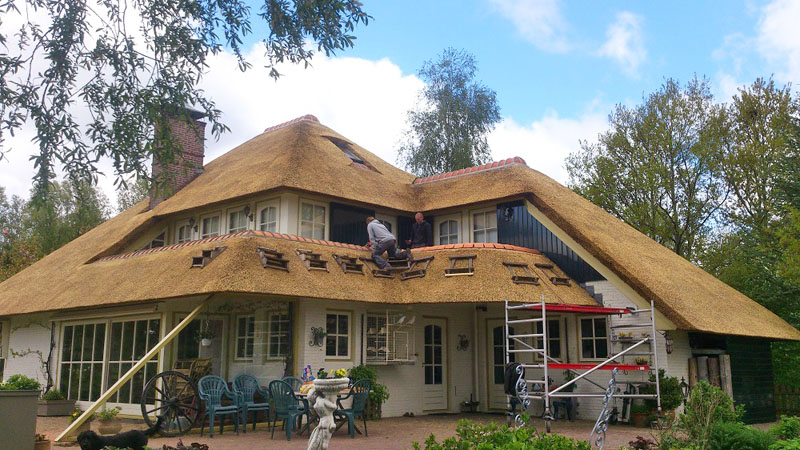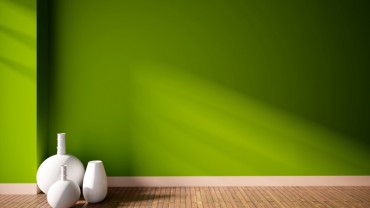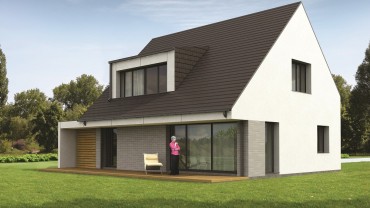
ADVANTAGES OF BITUMINOUS SHINGLES
Exceptional technical characteristics. They are especially resistant to UV rays and wind.
Shingles are not only nailed at the base but also has a specially prepared adhesive surfaces or strips, which clump together, so the roof is completely sealed and resistant to even high winds. This soft roofing inhibits precipitation noise, does not rattle, or accumulate static electricity.
In addition, the bituminous shingles roofing is fireproof. If contacted by the sparks or fire it will not burn. It is a lightweight roofing which does not create additional loads on the house.•

• Suitable roofing for roofs of complex configuration like domes or small buildings: sheds, woodsheds, gazebos, cellars, etc.
• A wide choice of colors and shapes. There may be more than 50 colors and shades.
• Durability – two layered laminated shingles are provided with 50-year warranty!
• Convenient mounting – a single container of shingles can be carried by one person, in addition, it is easy to carry out the work itself - just need to follow the manufacturer's installation instructions. Roofing has low residue (scrap).
• Easy upgrade. A new layer of shingles can be laid directly on the old one, so the cost of renewal of the roof is reduced to a minimum.
• Not a problem in the spring - the snow melts slowly and slides down from the roof.
ADVATAGES OF METAL ROOFING:

• Lightweight and yet very rigid and leakproof coating.
• Easy processing, rapid installation - work will go faster and cost less since it is easy to attach and the installation does not require special roofer’s skills or tools.
• Strong wooden rafters - lathing construction is not necessary just as unnecessary is a continuous flat base (a special one-piece mat), therefore wooden construction costs low.
• Maintains bright, unchanged color for long period.
• It requires no special care over the years, gathers no lichen or moss.
• Does not crack or crumble under extremely low temperatures.
• During winter, there is no need to climb on the roof to dig off the snow, because it does not stay too long. In addition, the weight of the snow does not bend the wooden construction.
• Great variety of color and pattern selection, which depends on the pitch of the roof. If it is more than 14 degrees, you can freely choose any profile pattern steel cover, if the slope is of 11-14 degrees, then it is possible to choose the V-profiled sheets, and if the minimum roof slope is- 7 degrees, it will fit just very tight, laminated or rolled profiles.
• Minimum roof slope - 7 degrees. The maximum is unlimited, there may be 90 degrees, so trapezoidal or rolled profiles can be used as wall coverings, even more so rolled plate mounting screws are made of stainless steel and are hidden under a coating. So, it less likely that the roofing will gather leaves, needles or other contaminants.
• Manufacturer's warranty: eg.: polyester-coated roofing can be provided with 10-year aesthetic and 30-year technical performance warranty. Some manufacturers of products provide even 20-year aesthetic and a 50-year warranty for technical performance.
• The roof covering can be installed independently by selecting a specific small sheet coating.
Best roof tightness, durability and aesthetic appearance is obtained when one manufacturer's parts are selected for the entire roof – coating, quality screws, rainwater drainage system, roof safety elements.
ADVANTAGES OF CERAMIC AND CONCRETE TILES:

Extensive experience has shown that ceramic or concrete tiles are particularly suitable to Latvian climate: tiled roofs at the seaside count centuries, and in the Highlands, many concrete tile roofs dates from the interwar period and still are reliable and sealed.
• Durability. The longevity of ceramic tiles needs no proof anymore because it can be seen in tiled roofs traditions in many European countries. In the Baltic states, there were attempts to destroy this tradition during Soviet times but now more and more people are choosing tile roof not only for new construction, but for renovation as well.
• Weight of the roof ensures its resistance to critical weather conditions such as thunderstorms or hail. Moreover, the more massive roofing is, the quieter and less overheated your house will be in the summer.
• Color stability and integrity. Color of ceramic tiles is coated prior to annealing. After annealing, the color becomes part of the surface of the tiles, so it will not peel off and fade. High-quality concrete tile color varies insignificantly and evenly over time, so the change is imperceptible.
• Tiles are hermetic. Who would want to have a leaking roof? The tiles are attached with brackets instead of screws as tin or slate sheets, so the roof does not have holes. To any roof importance and its accessories, so ensure the watertight integrity and the need to choose the appropriate sealing materials and the best use of the manufacturer's recommended solutions.
• Ecology. The tiles are made of natural materials, used for centuries. No chemical binders are used in their production.
Roof construction and slope. Tile roofing is recommended for roofs with a slope greater than 14 degrees. With the installation of completely waterproof fabric, tiles are mounted on the roofs with smaller gradients too. The roof structure must withstand snow and wind strains, its own weight and only then – the roofing. Roofing influence on the structure is minimal, and the snow load - the highest. Usually, roof structure for tiled corrugated sheets or tin roofs is made alike.
Tiles - a classic roofing. However, technological innovations can still improve them. New tile coating which reflects infrared rays, further reduces overheating of the roof, so during the summer temperature in the residential attic can be as much as 2 °C lower than any other roofing.
Price and quality. Often choosing a roofing customers are governed solely by price factor, regardless of the quality and rationality.
Some people prefer certain roofing out of habit left over from the Soviet period. Others choose certain roofing because they are recommended by roofers because they can be installed more quickly and easily, although such roofing does not always work in the best interests of the customer.
Roofing prices range significantly and depend on the production of raw materials and quality. Probably the most rational and cost-effective solution in terms of price, features, and durability - concrete tiles.
ADVANTAGES OF REED ROOFING:

• Organic. Reed roofing is one of the most environmentally friendly roofing options. Organic long reed roof creates a warm, saturated carbon and lively atmosphere at home. Reeds are grown by nature. Humans do not influence its growth in no way: he can only cut, clean, dry and prepare it for the roofing.
• Durability. Reeds are resistant to adverse weather effects - moisture, sunlight, and UV. Reed roof can last more than 50 years. If roofing is done by the professional technicians, then its durability will be equal to traditional roof coverings, and may even surpass many of them.
• Heat insulation properties. Reed is a plant of a porous structure, the stalks have partitions, located throughout the length of the stem, about 30 cm apart from each other (30 centimeters layer of reed thermal conductivity is 0.20 W/mK). Such structure of the reed does not allow for sound and heat to spread easily; no other roofing material has similar properties. The thermal conductivity of properly lined reed roof equals to 10 cm layer of glass wool thermal conductivity. Only in the last decade, this roofing insulation requirement was entered building construction rules, however, reed roofing had this feature had for centuries. Under the reed roof, it will be warm in winter and cool in summer!
• Quiet, sound-insulating roof. Reed roofing does not rattle, so residents in the attic will not hear heavy rain, hail or other irritating noise caused by natural phenomena.
• Waterproof. Reed contains wax components, in addition, it is a water plant, and is more moisture-resistant than other types of straw.
• Application in architecture. Reed roof is quite easily adaptable even for the hardest plastic design solutions. This roofing is suitable for coating complex shaped or substandard construction roof. It is ideal for houses and summer houses, saunas and small architectural structures like a gazebo, barn - any rural, urban or suburban building with a sloping roof structure.
• Coating thickness. The unique roofing with such structure, slope, swell and exclusivity. All other roofing systems are usually not more than 3 cm thick. In most cases - just 0.5 cm. Reed roofs are the only ones in which the coating thickness is even 25-35 cm.
• Installation of the roof elements. The reed roof, as with any other, can be fitted with safety barriers against snow and other elements of the roof. The only difference is the use of holders adapted for this type of roof.
• Uniqueness. The reed roof laid by the professional roofers will make any building unique: it will not only attract the attention of passers-by but also will significantly enhance its value. Building with reed roofing can perfectly integrate into a landscape of the town, and just as effectively be compatible with the modern urban environment.



